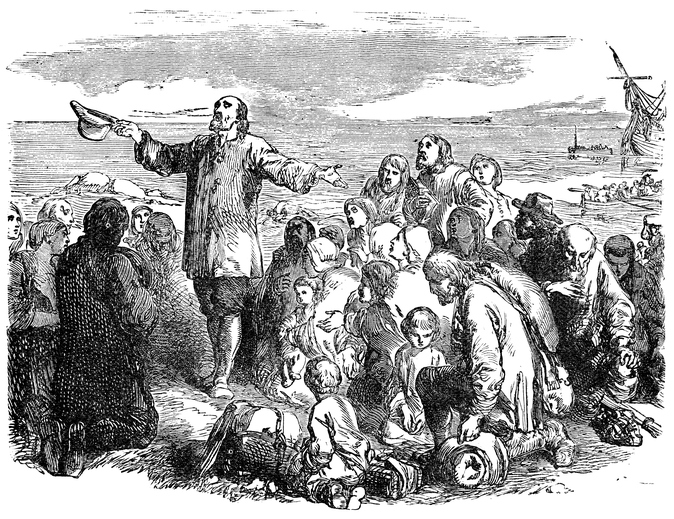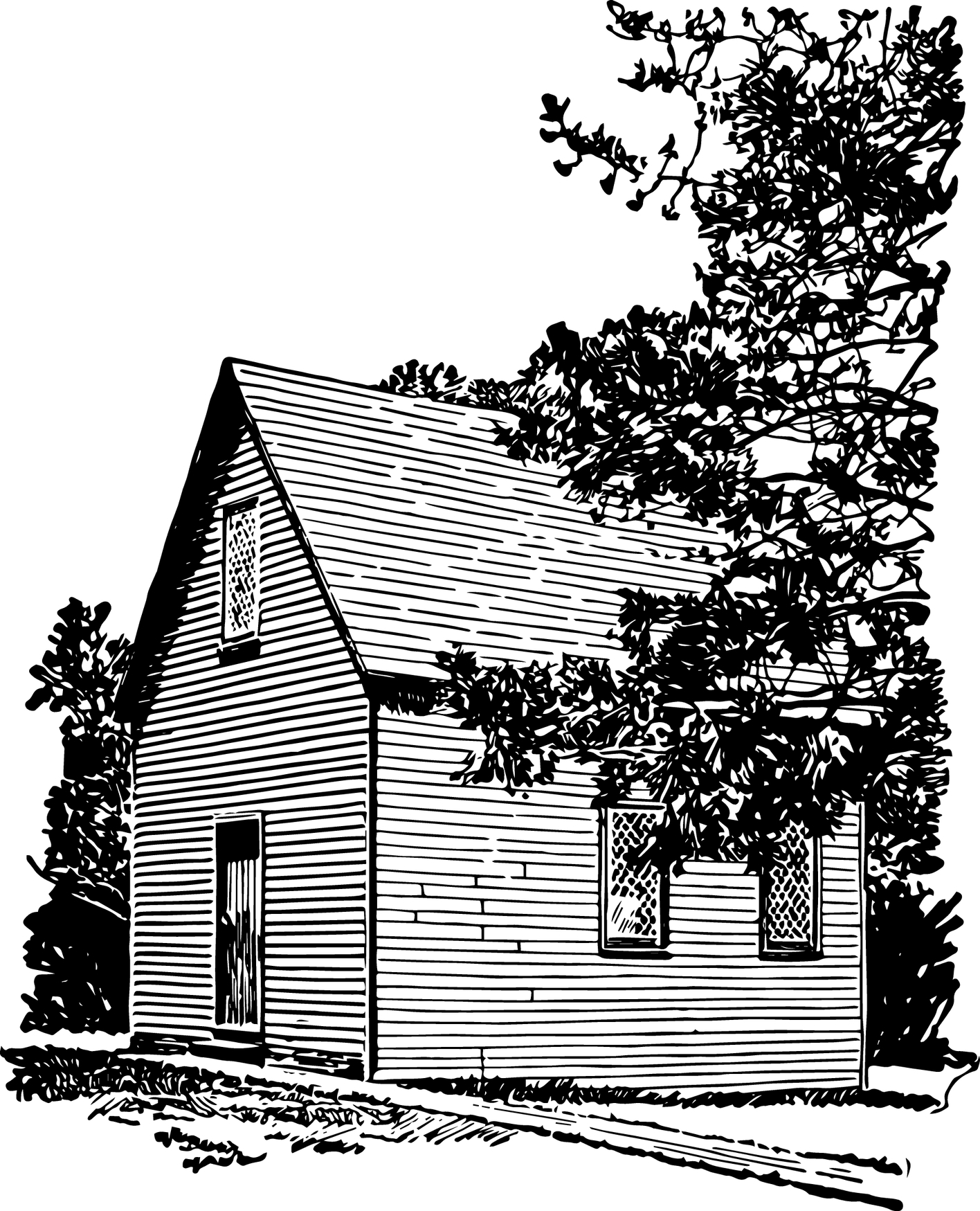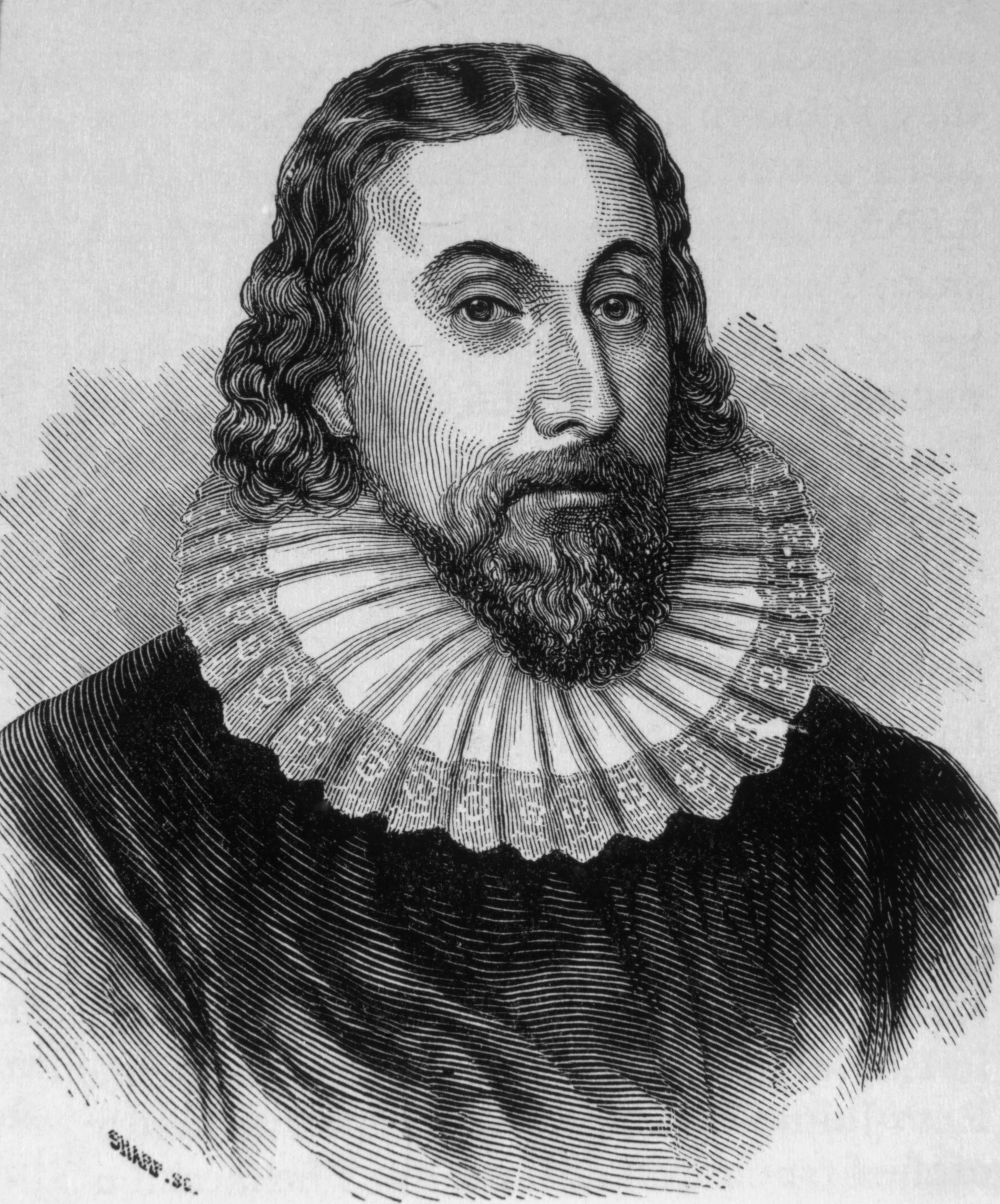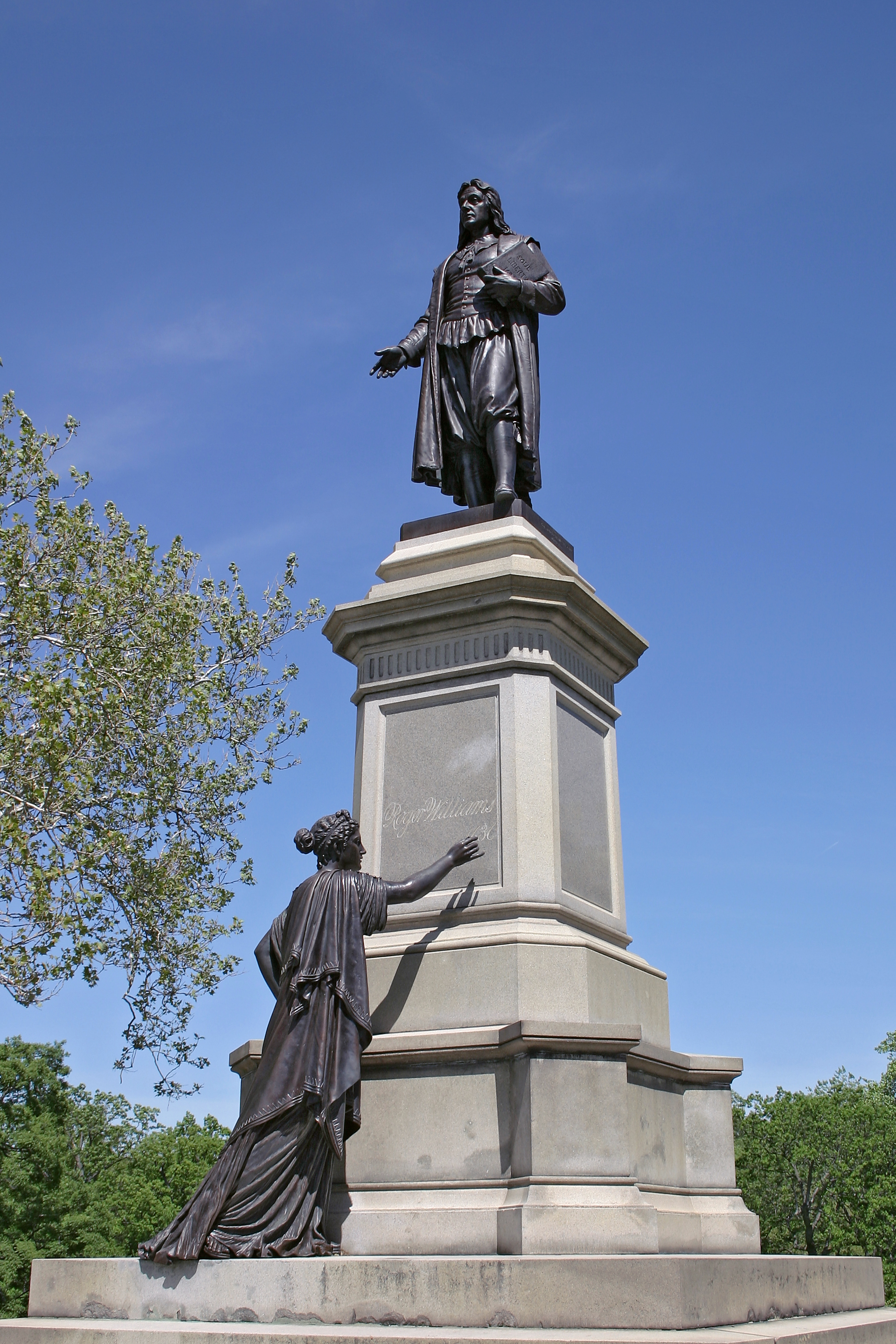
The New England Colonies
The founders of the New England colonies had an entirely different mission from the Jamestown settlers. Although economic prosperity was also a goal of the New England settlers, their true goal was spiritual. Fed up with the ceremonial Church of England, Pilgrims and Puritans sought to recreate society in the manner they believed God truly intended it to be designed.
Religious strife reached a peak in England in the 1500s. When Henry VIII broke with the Catholic Church of Rome, spiritual life in England was turned on its ear. The new church under the king's leadership was approved by the English Parliament, but not all the people in England were willing to accept the Church of England. At first, the battles were waged between English Catholics and the followers of the new Church—the Anglicans. The rule of Queen Elizabeth brought an end to bloodshed, but the battle raged on in the hearts of the English people.
Pilgrims Wanted to Separate from the Church of England; Puritans Wanted to Purify the Church
Pilgrims and Puritans both believed in the teachings of John Calvin. According to Calvin, neither the teachings of the Catholic nor the Anglican Church addressed God's will. By the end of Elizabeth's reign, England was a nation of many different faiths.
The Stuart family, who ascended to the throne after the demise of Elizabeth, made matters worse for the followers of John Calvin. King James and his son Charles supported the Church of England, but secretly admired the ceremonies of the Catholic Church. To these kings, Calvin was a heretic, a man whose soul was doomed for his religious views.
The Pilgrims, called Separatists in England because of their desire to separate from the Anglican Church, were persecuted by agents of the throne. The Puritans, so named for their desire to purify the Church of England, experienced the same degree of harassment. By the second and third decades of the 1600s, each group decided that England was no place to put their controversial beliefs into practice.

The first church of salem founded by the Puritan colonistsvintage line drawing or engraving illustration.
The first settlers in the Northeast arrived on the Mayflower and were a mix of Separatists and those looking for economic gain. Collectively called the Pilgrims, they were not all in America for religious freedom. However, more and more Separatists would arrive, and soon they outnumbered those who were not necessarily opposed to the Anglican Church. Eventually, a more severe form of Separatists, known as the Puritans, would settle north of Plymouth, and their ideals would take over the region.

John Winthrop (1588-1649)
In 1625, the English throne passed to Charles I. Charles objected to the Puritans’ calls for reform in the Anglican Church, and persecution of Puritans increased again. Some Puritans looked for a way to leave England. In 1629 a group of Puritans formed the Massachusetts Bay Company and received a royal charter to establish a colony north of Plymouth. This was the Puritans’ chance to create a new society in America—a society based on the Bible. The company chose a well-educated Puritan named John Winthrop to be the colony’s governor. In 1630, Winthrop led about 900 men, women, and children to Massachusetts Bay. Most of them settled in a place they called Boston.
During the 1630s, more than 15,000 Puritans journeyed to Massachusetts to escape religious persecution and economic hard times in England. This movement of people became known as the Great Migration. At first, John Winthrop and his assistants made the colony’s laws. They were chosen by the General Court, which was made up of the colony’s stockholders. In 1634, settlers demanded a larger role in the government. The General Court became an elected assembly. Adult male church members could vote for the governor and for their town’s representatives to the General Court. In later years, they also had to own property to vote. The Puritans came to America to put their religious beliefs into practice. The Puritans had little toleration—they criticized or persecuted people who held other religious views. This lack of toleration led to the creation of new colonies.

A statue of Roger Williams in Providence, Rhode Island
The fertile Connecticut River valley, south of Massachusetts, was much better for farming than was the stony soil around Boston. In the 1630s, colonists began to settle in this area. A minister named Thomas Hooker became dissatisfied with Massachusetts. He did not like the way that Winthrop and the other Puritan leaders ran the colony. In 1636, Hooker led his congregation through the wilderness to Connecticut, where he founded the town of Hartford.
Three years later Hartford and two other towns, Windsor and Wethersfield, agreed to form a colony. They adopted a plan of government called the Fundamental Orders of Connecticut. This was the first written constitution in America, and it described the organization of representative government in detail. Good land drew colonists to Connecticut, but Rhode Island was settled by colonists who were forced out of Massachusetts. The first of these was Roger Williams, a minister. Williams felt that people should not be persecuted for their religious practices. In his view the government should not force people to worship in a certain way. Williams also believed it was wrong for settlers to take land away from the Native Americans.
